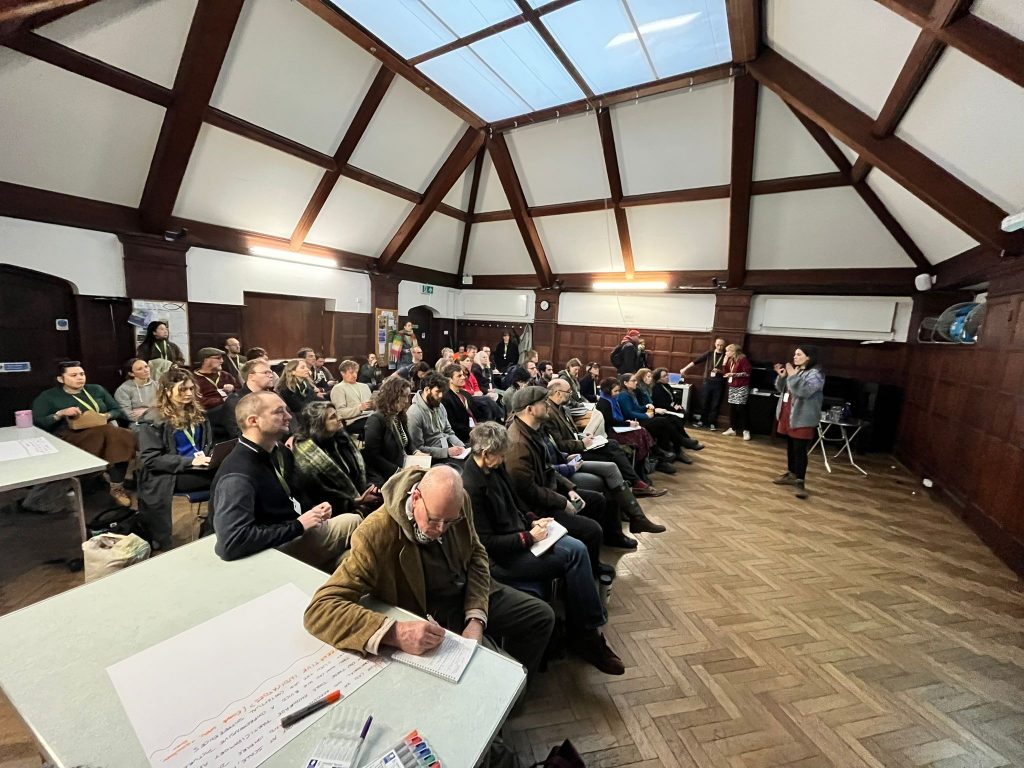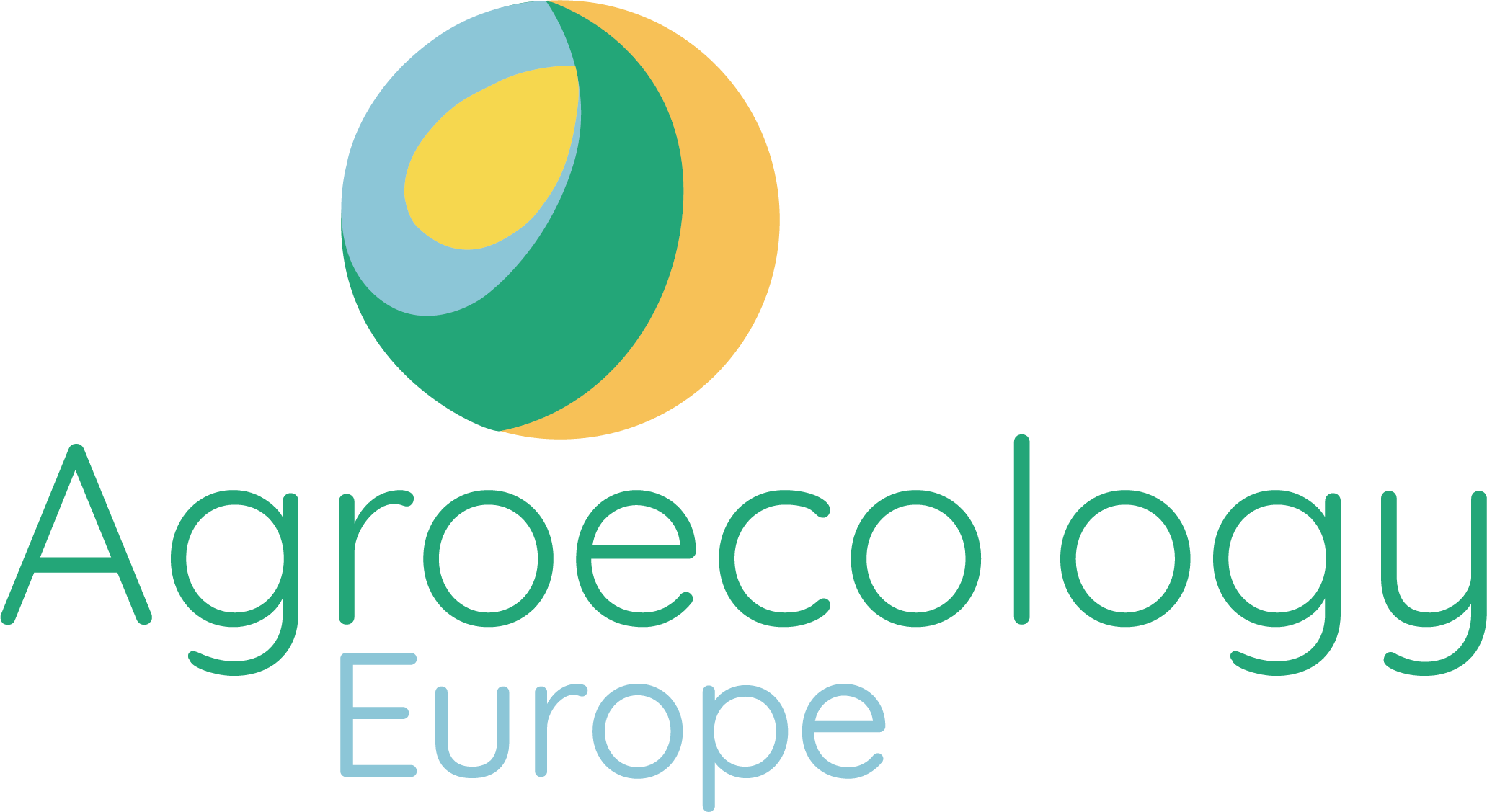
On 10 January 2025, Agroecology Europe and FAO teamed up to reflect on how measuring agroecology fosters the agroecological transition with delegates of the Oxford Real Farming Conference.
Authors: Vincent Dauby, Researcher at Agroecology Europe; Karla Škorjanc, member, Agroecology Europe; Lili Balogh, President, Agroecology Europe and Hungarian Agroecology Network Association; Remi Cluset, Senior agriculture advisory, FAO; Boglárka Bozsogi, member, Agroecology Europe
Agroecology has been gaining traction in food systems as a solution to various challenges the agriculture sector is facing. Nevertheless, agroecology is not an easy concept to grapple with. It covers multiple disciplines, can be applied at various levels (crop, farm, landscape, region, nation, …), is context-dependent, and is used by many different stakeholders. However, “Agroecology is arguably the only concept that is globally defined as being a holistic transformative approach to food systems, and there is mounting evidence of its potential to address several food systems challenges simultaneously (Geck, Crossland & Lamanna, 2023)”.
To facilitate its implementation and its possible support, various stakeholders have engaged in assessing and measuring agroecology. Measuring agroecology practices at the field or landscape level allows farmers to have an agroecological overview of their farm and identify possible pathways for improvement. It is also interesting for conventional farmers willing to transition towards agroecology. Measuring the transition towards agroecology is also possible for regions, making comparisons amongst them while monitoring progress and change. In addition, measuring agroecology and its positive impacts also encourages policymakers and funders to support the transition.
It’s in this light that FAO and Agroecology Europe co-organised a workshop at the Oxford Real Farming Conference to present their respective work on assessment tools and discuss remaining challenges and the evolution of those tools to strengthen support for agroecology. In a spirit of collaboration and cross-fertilisation, organisations that developed tools to assess agroecology should collaborate and work together for the global implementation and development of agroecology.
Agroecology Europe presented the OASIS tool. It was developed with the objective of supporting the transition towards agroecology “by assessing a farm at any given point in time and then evaluating its progress towards a full agroecological system by regular assessments during the transition (Škorjanc, 2025)”. OASIS is based on the 13 principles of agroecology and provides an assessment based on those principles. While OASIS has mostly been used in Europe, some learning opportunities have come out with its extended use in Africa given differences in cultures, language, local, and national regulatory frameworks, and local contexts rendering some of the indicators (ir)relevant (Agroecology Europe is currently participating in an European Horizon Research program, named URBANE, where OASIS is used with farmers in Africa to assess their activities and help developing a DSS (Decision Support System)).
FAO presented TAPE. This tool is the result of a process that started in 2018 with the objective “to assess the level of agroecological transition, and the multidimensional performance of households” and the ultimate goal of generating “global evidence on agroecology and support transition to sustainable agri-food systems (Cluset, 2025)”. The use of TAPE is based on 4 steps: a description of the context, conducted by interviews and desk review; a characterization of the agroecological transition, based on the 10 elements of agroecology; a multidimensional evaluation of sustainability performance based on the Sustainable Development Goals (SDGs); and an analysis and participatory interpretation of results.
TAPE has been tested in 58 countries, mainly in the Global South. Same as OASIS, TAPE is under continuous improvement. It’s been identified that the guidance for users could be improved, some indicators need to be refined while new ones need to be developed.
During the workshop, participants shared their views on how these tools and the generated data could tackle some key challenges for the development of agroecology. The following topics were discussed:
- How can assessment tools and data support the work of farmers and farm advisory services to foster transition?
- How can collected data help frame inspiring narratives for the agroecological transition and help tell success stories of agroecology?
- What kind of data do policymakers need to foster the transition and how can assessing tools participate in attracting and maintaining policymakers’ support?
- How can we measure agroecology at scale, at the territorial and regional level, and compare data? How can these tools encourage participatory approaches?
The rich world cafe discussions reached the following main conclusions:
- In order to provide convincing data to decison-makers, facilitate the understanding of the assessment results, and foster peer-to-peer learning, visual tools and clear benchmarks should be used to present data.
- Tools must be easy to use. They should be developed for use on smartphones (e.g., an OASIS app and a TAPE app).
- Tools could support and reinforce the work of advisors. Advisors must be trained in agroecology, and agroecology advising services must be financially supported for the long term.
- In best-case scenarios, farmers would willingly want to change their practices; they are not forced to do so. Therefore, education about agroecology and presenting its (economic) benefits is the first critical step of the transition.
- Peer-to-peer exchange and mutual learning between farmers and scientists are key to fostering the transition and developing agroecology. Therefore, data must be aggregated to allow comparison between farms and facilitate discussion and exchanges. This can also help monitor and compare the evolution of agroecology at the regional level.
- The collected data should help demonstrate success. Data can reinforce trust in the agroecology transition and facilitate discussion and communication among engaged stakeholders.
- The collected data should support the evaluation of subsidies and the efficiency of investments in developing agroecology, however, the commodification of nature must be avoided.
- Specific indicators should be developed to assess elements of the One Health approach, in particular on food quality and nutrition density.
- Data is not sufficient to influence and convince policymakers. Visiting farms and meeting with farmers is key. Data should not limit agroecology to a set of agronomic or economic metrics: To convince about the transformative aspect of agroecology, tools should be able to produce data that allows systemic and holistic thinking and going beyond measurements.
- Policies should support agroecology and the promotion and use of such tools.
Agroecology Europe, FAO, and other organisations working on assessment frameworks for agroecology will continue discussing and exchanging regularly about their experience with their respective tools to collectively learn from each other, improve their tools, and foster the agroecology transition.
Geck, M., Crossland, M., & Lamanna, M. (2023). Measuring agroecology and its performance. An overview of existing tools and approaches. Outlook on Agriculture 2023, Vol. 52(3), 349-359: https://doi.org/10.1177/00307270231196309
Škorjanc, K. (2025). OASIS framework presentation – Measuring agroecology to spread it further [Conference document]. Oxford Real Farming Conference 2025, Oxford, England.
Cluset, R. (2025). Tool for Agroecology Performance Evaluation (TAPE) – TAPE+ [Conference documents]. Oxford Real Farming Conference 2025, Oxford, England.
